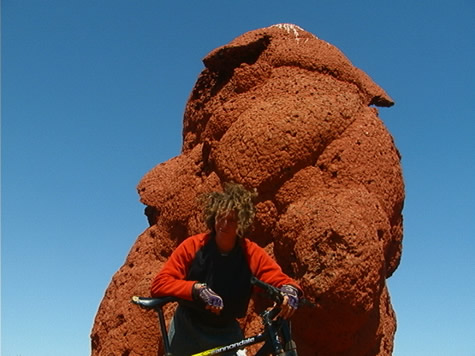Environmental Studies – termites
FOOD CHAINS
Looking at a termite mound above the ground in this vast desert country may seem as though the food chain of which the termites are a part is quite simple. Yet, as we have discovered, the system is actually quite complex.

Termites feed predominantly on the cellulose (plant fibre) in spinifex (a hardy type of desert grass, which thrives in dry, desolate places where few other plants can). Spinifex is so unappetising to almost all other herbivores that termites face little competition for it as a sustainable food source.
The animals that in turn feed on termites are in abundance; the barking spider and certain insect eating birds such as the mud lark. Further up the chain, lizards feed on barking spiders and they in turn provide a food source for larger lizards and birds of prey such as eagles and owls. The absence of mammals in such inhospitable areas means lizards are relatively high up in the food chain.
Suggested learning activities:
- research the difference between ants and termites.
- look at ants/termites in your area. What do they predate upon? What predates upon them? Draw a diagram to illustrate your answer.
- look at the types of structures the ants/termites in your area build to live in. How are they similar and/or different to the termite mound in the photo of the general update.
Feed your termites cellulose. Joshua.